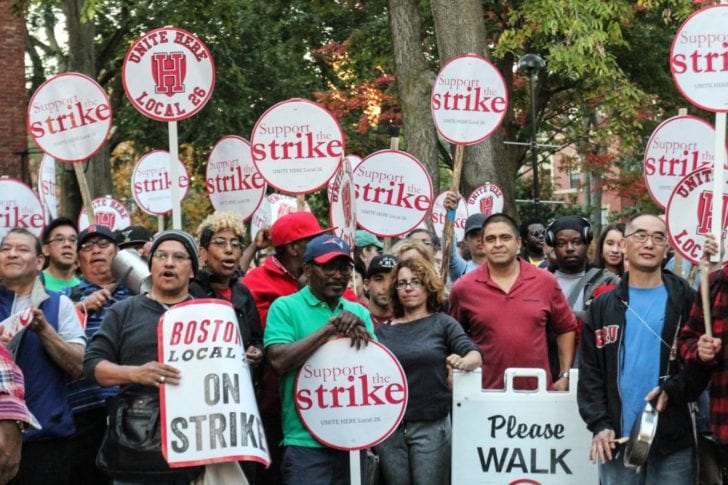
How Cambridge can put public need before private greed
A five-hour city council hearing can really get you thinking.
As I sat watching the latest chapter in the East Cambridge courthouse saga unfold at city hall on Monday, I mulled over what it would take to start moving the city away from dependence on rubber-stamping massive commercial developments and toward Cambridge government advocating development in the public interest based on the needs of its working- and middle-class residents. Who remain a significant percentage of its population even after decades of gentrification and displacement.
Because the dozens of locals who testified against city government leasing the 420 public parking spaces that developer Leggat McCall Properties needs to be able to proceed with its plan to convert the publicly owned 22-story Sullivan Courthouse into yet another high rent commercial office building—a clear majority of those who spoke—said one of the biggest problems they see with the contested deal is that neither city nor state government ever considered doing anything with the structure other than trying to sell it off to the highest commercial bidder. Given that Cambridge city government is looking for more easy (if insufficient, relative to the tremendous wealth being made by major corporations doing business in the city) tax money from more commercial developments, and state government is just looking to sell the property with a minimum of fuss. Without trying to get the kind of money that the property is actually worth in the red-hot local real estate market.
It’s not bad enough that the now-defunct Middlesex County government dumped the much-hated building on East Cambridge a half-century back, but now both city and state governments are squaring off against the large numbers of Cantabrigians who have long wanted to see the courthouse property used to build more affordable housing units. Something desperately needed by the thousands of people now on public housing waiting lists.
This is because people who believe very strongly that corporations should run the show in our society—neoliberals, as they’re commonly called—occupy most of the positions in all the key departments, committees, and elected bodies that make decisions about development and taxation in cities like Cambridge nationwide.
So my question to myself as I sat watching the fray in the council chamber was: What kind of political movement would it take to ensure that public need comes before private greed in the so-called “People’s Republic”? How can ordinary people make that mocking appellation into a more democratic reality?
Based upon the decades of labor and community advocacy that I’ve done (sometimes overlapping my many years as a journalist), I decided that it will take a well-coordinated effort of committed denizens to really change the focus of Cambridge’s development strategy.
Specifically, it will take the formation of a network of people who believe in the importance of a public development focus for the city that has the ability to run neighborhood organizing, education, political pressure, electoral, and public relations campaigns simultaneously. For the years it would take to change the way development is planned and executed.
A quick look at each of these campaign areas is thus in order.
Neighborhood Organizing
There can be no successful grassroots political movement without a strong base of active supporters. Particularly when trying to spark a sea change in an area like development policy. So an early initiative of any network trying to challenge the status quo in such a major way has to be recruiting members from every neighborhood in the city. People who are willing to go door to door to talk to their neighbors, donate money to build their organization, and do all the other work necessary to win enough political power to achieve their movement’s goals. Eventually forming neighborhood committees representing every part of Cambridge.
Education
It will take a lot of education to convince residents that changing Cambridge’s development focus to producing public goods—like massive amounts of genuinely affordable housing—is a better deal for the city than the current model of chasing after commercial developers, lightly taxing what they build while keeping property taxes low (placating corporations and wealthy homeowners) then disbursing the still-significant funds collected to provide somewhat better services to residents than most other American cities can. Such education can only take place after lots of research has been done on best practices for public development and debate has taken place among advocates about the right kind of public development to add to the city’s current commercial-heavy mix. This, needless to say, will take a good deal of work on the part of advocates with the appropriate professional backgrounds.
Political Pressure
This is the group of activities that most people associate with grassroots political movements. Getting big teams of advocates out on the streets with placards and bullhorns. Filling the city council chamber with testifiers. Facing off with any open opposition. Dogging recalcitrant politicians. Basically all the adventurous stuff. Which is necessary and useful—done carefully. But there’s more to a political movement’s pressure campaign than public standouts. There is also the long hard grind of sending small teams of knowledgeable advocates to the meetings of the kinds of city committees, commissions, and boards that have a lot of power in the development process. Notably, the powerful Cambridge Planning Board. Such specialist teams will need to understand the inner workings of municipal government to inform the political movement’s strategy, to better target tactical street team actions, and to map out appointed positions that will need to be filled with advocates once the movement is ready to take political power—in elections.
Electoral Challenges
If the ultimate goal of the political movement I’m outlining is to change Cambridge’s development orientation from serving commercial developers to serving the needs of working- and middle-class residents, the penultimate goal must be taking over city government. As long discussed by generations of political commentators, this is very difficult to do because of the city’s “Plan E” form of government. With a city council comprised of all at-large seats elected by a byzantine ranked-choice voting system, a weak mayor that is a councilor and a first among equals elected by the other councilors, and a powerful city manager—who is appointed by the council (but rarely challenged by it)—in charge of the budget and many city staffers. Nevertheless, it is possible for a well-organized movement to win a majority of city council seats. Then the new council can use its hire/fire power over the city manager to effect significant change. Even without switching to a different form of government. Which is probably more difficult to do than winning a majority on the council. However, even a majority reform city council is still going to have a very hard time changing Cambridge’s development focus without a well-organized, disciplined, and informed movement behind it. Because city government has many moving parts and is not operating in a vacuum. Commercial developers are among the most powerful political forces in America and are more than capable of blitzing a rebel city government with more lawsuits and pressure from allied politicians at the state and federal level than it can handle. Followed by bankrolling the election of a more “friendly” pro-corporate council. A mere two years after a reform council is seated. So a movement council would not just have to win power once, but stay in power for many terms. A tall order to be sure, but a necessary one. To do that, a political movement for public development will have to win not only the ground war of electoral politics but also the air war of public opinion.
Public Relations
As I observed at Monday’s hearing, some East Cambridge residents were stampeded into action on behalf of a powerful commercial developer over the last several days by a suspiciously well-timed scare campaign with a single talking point: that a building—the Sullivan Courthouse—widely known to contain asbestos still contained asbestos. Leading one resident to testify that “we can all die” [from asbestos exposure]. Which would not be the case even if the entire population of the neighborhood worked in an asbestos mine. Such hyperbole is the result of corporate propaganda. Pushed on East Cambridge across a variety of media by the faction with far deeper pockets than its grassroots opposition, according to other testifiers. Naturally, the risk of the empty toxic building to abutters is not zero even if sealed off from the outside to the extent that it is, and must be taken seriously. But to go from that assessment to saying that Cambridge city government must allow the sale of the courthouse to Leggat McCall Properties because only they can remediate the asbestos in the building is simply sophistry. Since the sale has not yet been completed, the courthouse is still owned by the Commonwealth of Massachusetts and managed by the Division of Capital Asset Management and Maintenance (DCAMM). As many testifiers stated Monday, if the building presents an environmental threat to the neighborhood then DCAMM has to take immediate steps to remediate that threat. If it fails to do so, then Cambridge city government is well within its rights to push the state to take appropriate action in defense of public health. Including filing lawsuits, if necessary. The kind of decisive action that city officials have uniformly (and tellingly) failed to take during the years this fight has gone on. All of which is to say that public relations work is much more important to the success of a political movement than it might seem to be at first blush. If the East Cambridge residents against the courthouse sale to Leggat had a team of volunteers with appropriate professional PR skills at their disposal, the latest tempest in a teapot argument in favor of the sale would have been seen as the propaganda it was by all but those most ideologically committed to that outcome. And its political effect would have been neutralized. So the future movement for development in the public interest cannot possibly succeed without just such a team.
Until Cambridge residents can build the necessary political movement, all actions against the dominance of commercial development in city politics will be defensive. Which is better than nothing. But not the game-changer that the city’s remaining working- and middle-class families need.
Regardless, the Cambridge City Council went into recess on the matter of leasing the 420 public parking spaces to Leggat at the end of the hearing. Kicking the can of the vote that will help decide the disposition of the disputed public property down the road another week or three. Even as residents committed to keeping that property public are threatening lawsuits over alleged violations in the city’s process to lease the spaces and other irregularities. The courthouse fight, then, is far from over.
9/11/19 Note: The Cambridge City Council continued the recessed hearing to Wednesday 9/18/19 at 3pm after the print edition of this column went to press.
Apparent Horizon—recipient of 2018 and 2019 Association of Alternative Newsmedia Political Column Awards—is syndicated by the Boston Institute for Nonprofit Journalism. Jason Pramas is BINJ’s executive director, and executive editor and associate publisher of DigBoston. Copyright 2019 Jason Pramas. Licensed for use by the Boston Institute for Nonprofit Journalism and media outlets in its network.





